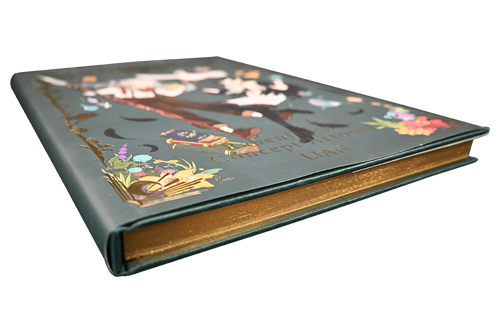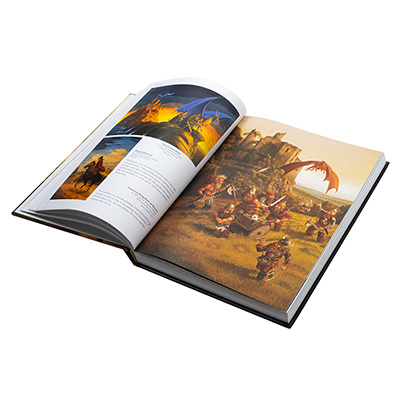Unique Features That Add Value to Your art book
Unique Features That Add Value to Your art book
Blog Article
Comprehending the Refine Behind Top Notch Art Book Printing for Art Enthusiasts
When it involves top notch art book printing, comprehending the details of the procedure can elevate your appreciation for the final item. You might not recognize how crucial paper option and ink choices are to the vibrancy of art work. Each aspect plays a substantial duty in accomplishing the wanted effect. As you explore the various components of art book printing, you'll reveal understandings that could transform your point of view on art conservation and presentation.
The Relevance of Paper Selection in Art Book Printing
When it concerns art book printing, the choice of paper can make or damage the end product. You desire your artwork to beam, and the right paper enhances color vibrancy and detail. Consider factors like weight, structure, and surface; these elements considerably affect exactly how readers regard your work.
For circumstances, a heavier stock shares high quality and toughness, while a distinctive finish can include deepness to images. Smooth paper is excellent for comprehensive reproductions, enabling fine lines and refined tones to appear crisp.
Don't forget the paper's brightness; a brighter sheet can aid colors pop, making your art extra eye-catching. You'll also desire to consider how the paper communicates with inks and whether it can manage the printing process without contorting or bleed-through. Eventually, picking the right paper sets the stage for your art, guaranteeing it catches the audience's interest equally as you pictured.
Selecting the Right Inks for Vivid Recreations
Picking the right inks is equally as important as choosing quality paper to accomplish vivid recreations in your art book. When you're printing artwork, you want colors that stand out and accurately stand for the initial item. Go with inks with a high pigment focus; these often tend to generate richer and much more saturated shades.
You might take into consideration utilizing historical inks, which stand up to fading with time, guaranteeing your art book remains as striking as the day it was published. If you're functioning with photographs or digitally produced art, pigment-based inks can give a bigger color range, enhancing detail and depth.
Do not forget regarding the finish! Matte and glossy inks can substantially change the look of your artwork, so think of the look you're aiming to attain - art book. Ultimately, the best ink choice matches your paper choice, developing a stunning visual experience for your visitors
The Function of Color Monitoring in Publish Quality
Color management plays a vital function in accomplishing high print top quality for your art book. It guarantees that the colors you see on your display convert accurately to the printed page. Without reliable color administration, your lively artworks might show up dull or altered, weakening your innovative vision.
Next, utilize shade accounts tailored for your printer and paper kind. These profiles lead the printer in reproducing colors precisely, lowering discrepancies between electronic and printed variations.
When you prepare your files, think about using a shade space like Adobe RGB or CMYK, depending on your printer's specifications. Always evidence your job, as well; an examination print can disclose any type of potential color problems before the last run. By focusing on color administration, you protect the honesty of your art, ensuring your audience experiences it as you meant.

Understanding Different Binding Techniques
Accomplishing the best seek your art book surpasses color monitoring; binding methods also play a substantial role in its overall presentation and longevity. You have a number of choices to examine, each with its very own distinct attributes.
If you're going for an expert feel, instance binding offers a durable option with a tough cover, perfect for showcasing your artwork. On the other hand, perfect binding provides an adaptable spine while keeping costs down, making it a preferred selection for softcover publications.
Spiral binding allows your art book to lay level, which is excellent for presenting photos without blockage. At the same time, saddle sewing is optimal for smaller sized brochures, giving a clean finish without the bulk.
Eventually, the binding strategy you select need to show your creative vision and exactly how you desire viewers to engage with your job. Make sure to consider these choices meticulously to achieve the finest result for your job.
The Effect of Publish Size and Design on Discussion
While the option of print dimension and design may appear additional to material, they significantly affect just how your artwork is viewed. The dimensions of your prints can either enhance or decrease the influence of websites your items. Bigger prints can draw audiences in, permitting them to appreciate intricate information, while smaller styles may require more intimate involvement.

Preservation Methods for Resilient Art Books
To guarantee your art books stand the test of time, it's vital to execute effective conservation methods. Begin by storing them in a trendy, completely dry atmosphere, far from straight sunshine and humidity. This stops fading and warping, keeping your web pages undamaged. Use acid-free storage boxes or safety sleeves to shield them from dirt and physical damages.
When handling your books, always wash your hands or use cotton gloves to avoid oils and dirt transferring onto the pages. Stay clear of bending or wrinkling the backs; rather, use book sustains when presenting them.
For added defense, take into consideration purchasing archival-quality products for any kind of repairs or improvements. Consistently examine your collection for site indicators of wear or damage, resolving concerns without delay. By complying with these simple methods, you can ensure your art publications stay vibrant and accessible for several years to come, maintaining their elegance and value for future generations.
Collaborating With Printers for Optimum Results
When you're prepared to publish your art book, choosing the ideal printer is necessary to attaining your vision. Clear communication regarding your assumptions and needs will certainly help assure that both you and the printer get on the very same web page. Let's check out how to make this partnership as seamless and reliable as possible.
Selecting the Right Printer

Reliable Interaction Approaches
Reliable interaction is important for turning your art book vision right into truth, especially when working together with printers. art book. Start by plainly describing your task's objectives, consisting of layout components, preferred products, and any kind of specific printing methods. Do not wait to share your motivations and references; this assists the printer recognize your aesthetic
Establish normal check-ins to discuss progression and resolve any concerns. Usage visuals, like mock-ups or samples, to share your concepts more efficiently. Be open to responses, as printers often have beneficial insights that can improve your job. Finally, preserve a favorable partnership by being respectful and pleased of their expertise. This collaboration will assure that your art book meets your expectations and radiates in its final type.
Often Asked Concerns
What Are Common Mistakes to Stay Clear Of in Art Book Printing?
When publishing your art book, stay clear of common mistakes like bad resolution photos, incorrect shade accounts, and disregarding web page layout. Do not fail to remember to check and double-check information to confirm your end product fulfills your assumptions.
How Does Digital Printing Differ From Standard Printing Techniques?
Digital printing uses digital files to develop prints directly, permitting quicker turnaround and modification. In contrast, review traditional approaches include physical plates, which can be taxing and less flexible for small runs or unique layouts.
What Is the Regular Turn-around Time for Art Book Printing?
The typical turnaround time for art book printing differs, however you can anticipate it to take anywhere from a few weeks to several months. Variables like complexity, amount, and printing method all affect this timeline.
Can I Print a Limited Version Art Book Financially?
You can publish a limited version art book financially by picking cost-effective materials, enhancing print runs, and utilizing digital printing choices. Mindful preparation and budgeting will help you attain top quality without overspending.
What Are the Environmental Factors To Consider in Art Book Printing?
When considering art book printing, you need to think of environmentally friendly materials, lasting inks, and energy-efficient processes (art book). Choosing local printers can also lower your carbon impact, making your project both stunning and eco responsible
Report this page